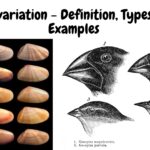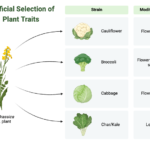Basic Microbiology 15 Views 1 Answers
Sourav PanLv 9September 4, 2024
Compare the following : (i) Sabin and Salk polio vaccine (ii) Active and Passive immunization.
Compare the following : (i) Sabin and Salk polio vaccine (ii) Active and Passive immunization.
Please login to save the post
Please login to submit an answer.
Sourav PanLv 9May 15, 2025
(i) Sabin vs. Salk Polio Vaccine
Sabin Polio Vaccine (Oral Polio Vaccine, OPV):
- Type: Live attenuated vaccine.
- Administration: Oral.
- Immunity: Stimulates both systemic and local (intestinal) immunity. Provides good community immunity because it can be spread from person to person.
- Benefits: Easier to administer (oral) and usually less expensive. Can lead to herd immunity as it spreads through the community.
- Risks: Rare risk of vaccine-derived polio (VAPP), where the weakened virus in the vaccine can mutate and cause disease.
Salk Polio Vaccine (Inactivated Polio Vaccine, IPV):
- Type: Inactivated (killed) vaccine.
- Administration: Injection.
- Immunity: Primarily stimulates systemic immunity (protection in the bloodstream). Less effective at stimulating local immunity in the gut.
- Benefits: No risk of vaccine-derived polio. Safe and effective in preventing polio.
- Risks: More expensive and requires injections, which can be less convenient. Does not contribute to herd immunity as effectively as the OPV.
(ii) Active vs. Passive Immunization
Active Immunization:
- Definition: The process by which exposure to a disease triggers the immune system to produce antibodies and develop immunity.
- Method: Typically achieved through vaccination (e.g., with live attenuated, inactivated vaccines) or through natural infection.
- Duration: Generally provides long-lasting immunity, often years or even a lifetime.
- Mechanism: The body’s immune system learns to recognize and fight the pathogen if encountered again in the future.
Passive Immunization:
- Definition: The process of providing immediate, but temporary, protection against a disease by administering pre-formed antibodies.
- Method: Achieved through the transfer of antibodies from another source (e.g., through antibody-containing blood products, such as immunoglobulins, or from mother to baby via the placenta or breast milk).
- Duration: Provides short-term protection, typically lasting a few weeks to a few months.
- Mechanism: The immune system does not learn to recognize the pathogen; it relies on the external antibodies for protection.
0
0 likes
- Share on Facebook
- Share on Twitter
- Share on LinkedIn
0 found this helpful out of 0 votes
Helpful: 0%
Helpful: 0%
Was this page helpful?




